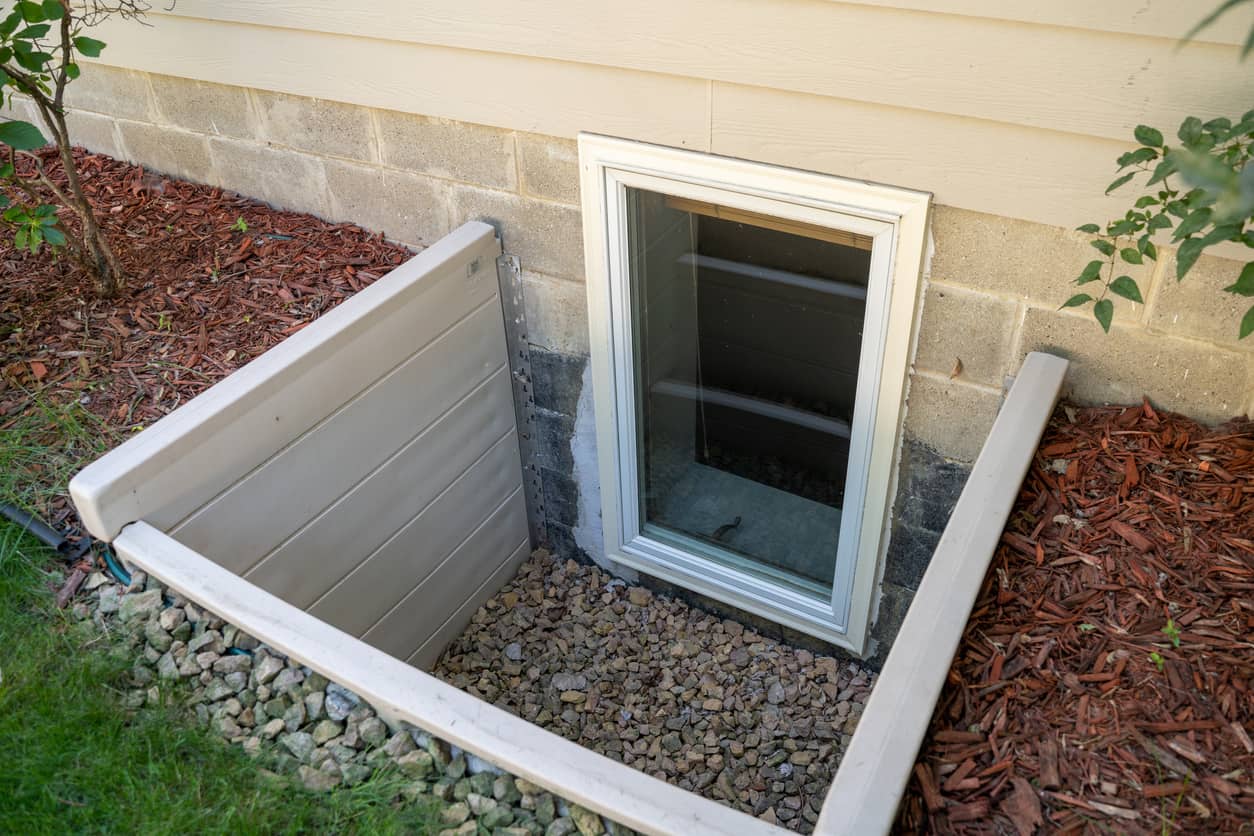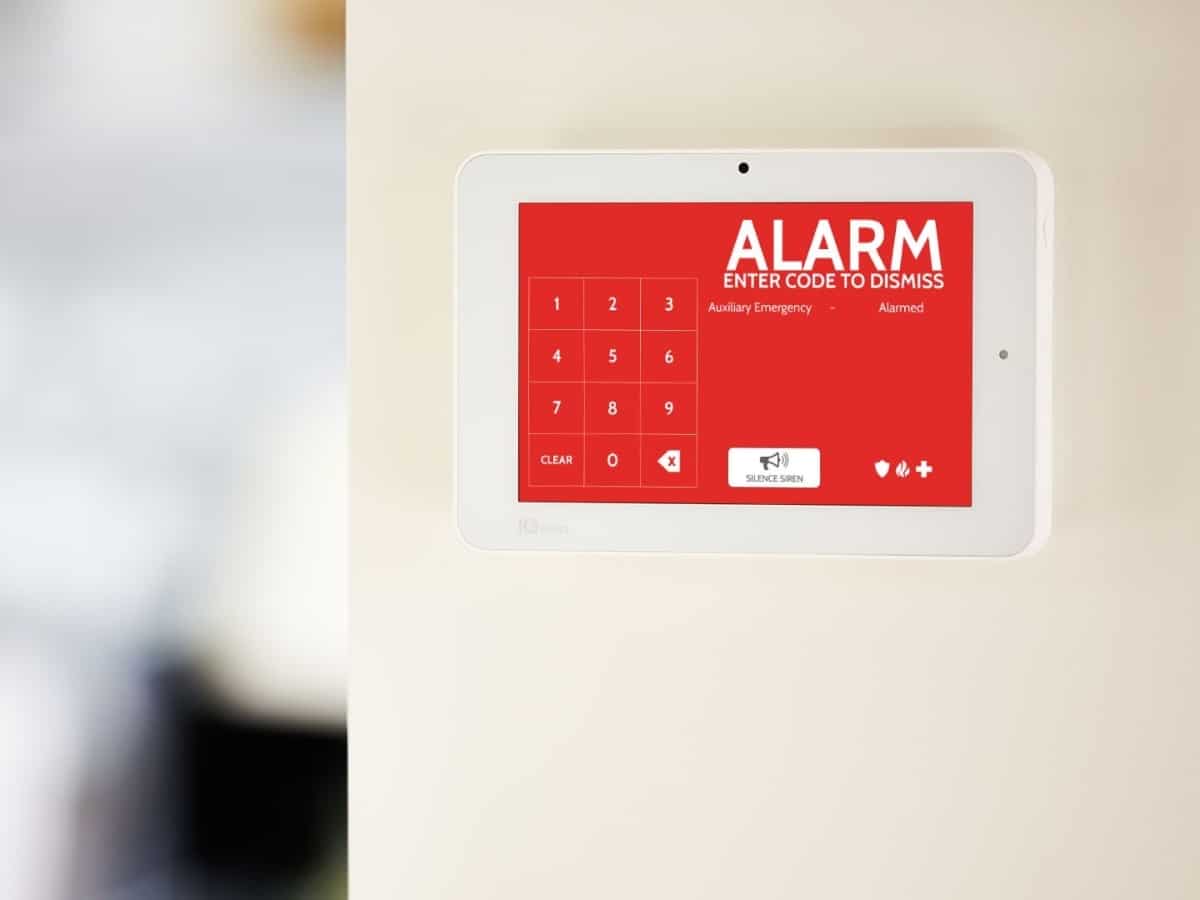As a homeowner, you’re responsible for the safety and security of your property. Besides entry doors, your home’s windows pose the greatest risk of intruders gaining access to your home. Window alarm sensors, aka contact sensors, can beef up the security of your windows to protect you against burglary or intrusion.
What are Contact Sensors?
Contact sensors are security devices placed on your home’s windows to alert you when someone is trying to open the window and get into your home. These sensors connect to your home security system via transmitters. If an intruder attempts to gain access into your home through a window after you’ve activated your security system, the sensors will sound an alarm. Most homeowners choose wireless sensors that run on batteries as they’re easier to install. Hardwired window sensors work just as well; they’re just more challenging to install.
How Window Sensors Work
Window sensors are basically composed of two units: a magnet and an alarm transmitter, along with mounting mechanisms. You can attach these units inside or outside of your window, in a hidden nook where they cannot be tampered with. One piece goes on the glass part of the window while the other affixes to the frame. A magnetic connection keeps the pieces together when the window is closed. Opening the window breaks the magnetic connection. This trips a switch that activates an alarm to alert you that someone is trying to break into your home.
Some sensors utilize a light beam instead of a magnet. One unit generates the light and the other receives it. When the window is opened, it creates a breach in the light field, activating your alarm. Most contact sensors come with an on/off switch to allow you to open and close your windows at will without worrying about triggering an alarm.

Types of Window Sensors
Due to modern technology, homeowners today can choose from a variety of window alarm sensors to protect their property. These include:
- Contact sensors
- Motion detection sensors
- Glass breakage sensors
- Vibration sensors
Here’s a brief description of each:
Contact Sensors
Contact sensors come in two forms: wireless and hardwired.
Wireless Contact Sensors
Wireless sensors work on batteries, making them extremely easy to install. However, you need to monitor the batteries carefully to ensure they’re operating as they should. Weak batteries put you at risk of a lapse in your security.
Hardwired Contact Sensors
Hardwired sensors require attaching a wire from the sensor to your security alarm system to make them work. This makes them more challenging to install. Once the wiring is in place, however, the system is fully operational. Hardwired window sensors also cost less than their wireless counterparts.
Motion Detection Sensors
Motion sensors sound an alarm when they detect unexpected activity around your windows. You can connect these to an outdoor flood light or security camera to boost your security. A security camera gives you a clear picture of who or what triggered the sensor – whether it was a trespasser, a bird or some other small animal scurrying around your property.
Glass Breakage Sensors
Contact sensors only detect window movement, i.e. opening or closing of a window. They don’t respond to breaking glass. That’s what glass break sensors are for. Glass break sensors detect the impact and sound of breaking glass to forewarn you that an intruder is trying to get into your home. They’re an excellent way of boosting the security of large, non-opening windows or sliding glass doors – structures which provide easy access into a home. As glass break sensors can cover multiple windows, they’re a cost-effective means of protecting your home.
Vibration Sensors
Vibration sensors measure the vibration of a window. If the window vibrates past a certain level or threshold, the sensor triggers an alarm. Unfortunately, vibration sensors are quite sensitive to the elements. A severe wind, hail or rainstorm can set them off just as much as someone trying to enter your home. This makes them less effective in protecting your property.

Key Features of Window Sensors
Modern window alarm sensors come with different features to facilitate installation, improve their function or make them more adaptable to your home or lifestyle. When shopping for window sensors, consider what features are important to you and which you can do without. Here are some of the most common features you’ll find in window sensors today:
Appearance
You’ll find window sensors in different sizes, styles and designs. If your sensors are going to be visible, you may prefer an appearance that’s pleasing to the eye.
Alarm Settings
Window alarm systems differ in the sound and volume of their alarm. A costly system may have better sound or volume than a less expensive one, making it easier to distinguish when the alarm goes off. If you’re a deep sleeper, select an alarm that’s loud enough to wake you from your slumber.
Remote Accessibilities
Many alarm systems allow you to sync the alarm with your smartphone for remote accessibility. This gives you easy access to your system when you’re far from home. You can program your home security system to notify you when a sensor is triggered so you can alert the police that someone is trying to break into your home. This can spare you from the heartbreak of theft, unlawful entry or vandalism. Remote access gives you greater control over your system as well. You can, for example, turn your system off right before entering the door at night, giving you quick and easy access into your home, and then reactivate it once you’re inside.
Keycodes
Choosing a window sensor system with a keycode adds extra security to your home. Even if a burglar or intruder finds a way of bypassing the sensor, he won’t have the keycode to disable your alarm.
Camera Access
By combining sensors with a security camera, you can get a live view of what’s happening in your home from your smartphone after an alarm has been set off. You can install one or more security cameras around different windows of your home to catch your intruder in action. You can even record what he or she is doing as evidence of criminal activity on your property.
Importance of Installing Window Sensors in Your Home
Let’s face it – in this day and age, home security isn’t a luxury – it’s a need! Even if you live in a gated community, you run the risk of theft or being the victim of a home invasion. Windows pose some of the greatest risks in a home, due to being so easily accessible from the ground floor. Most people are mindful of locking the doors behind them when they leave their property or before they retire at night. However, you can easily forget to lock windows. That’s why adding extra security to your windows is so important.
Unlocked windows provide easy access for intruders to enter your home. When installed correctly, window sensors give you an extra layer of protection against theft or intrusion. You can rely on the accuracy and effectiveness of window sensors to safeguard your property. Adding window sensors to your security system will give you greater confidence that your family and property are safe and protected from harm.
Window and door sensors play a major role in protecting your home. They’re a key component of any home security system. Many home security systems come with their own set of ready-to-install window sensors. You can also purchase more for large properties, if you have need. Ideally, every window of your home should have a contact sensor, particularly those on the ground floor. Wise homeowners will secure their second-floor windows as well, particularly if there’s a tree or structure near the window that makes it easy for someone to gain access into their home. Better to be safe than sorry when it comes to the protection of those you love.
Tips for Choosing Window Alarm Sensors
Home security isn’t “one size fits all.” Homes differ in size, structure, floor plans and construction, making it necessary to tailor your security to suit your needs. If you’re going to add window sensors to your home security system, choose sensors that will serve your home well. Your primary objective is boosting your security to protect your property and family. Look for sensors that will do the job safely and effectively.
When choosing window sensors, consider the size and layout of your home as well as points of entry. Consider what you’re protecting and how you can best accomplish this goal. If you live in a high crime area or have lots of valuables, you can combine various types of sensors for maximum protection. You’ll also want to consider sensor installation and costs.

Look To ONIT Home For Customizable Security Packages
If you need help deciding on the best home security options for you, give ONIT Home a call. We specialize in home security systems and can update you on the latest in smart security technology to meet your security needs. To find out more, visit us online or give us a call today at 1-833-433-0331.



